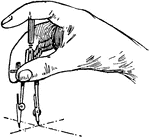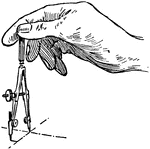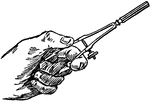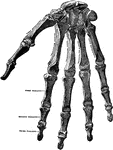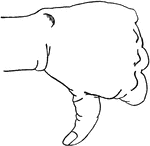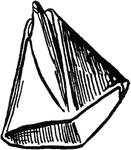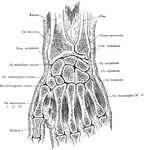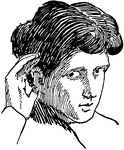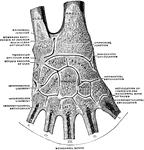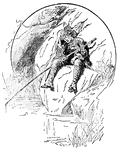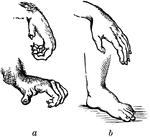
Comparison of the Hand and the Foot of a Monkey and Human
The power possessed by the hand of a human is chiefly depended upon the size and power of the thumb,…
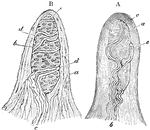
Touch Corpuscles
Touch corpuscles are found in the papillae of the skin of the fingers and toes, or among its epithelium;…

Touch Corpuscle of Meissner
Touch corpuscles are found in the papillae of the skin of the fingers and toes, or among its epithelium;…

A Diagram of the Heart
The left auricle and ventricle opened and a part of their anterior and left walls removed. The pulmonary…
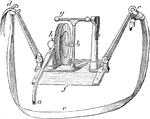
Stethograph or Pneumograph
The stethograph or pneumograph consists of a thick rubber of elliptical shape about three inches long,…
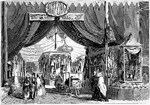
Crystal Palace Turkish Department
The entrance to the Turkish Department at the Great Exhibition of 1851 shows a fabric-draped ceiling…

German 17th Century Chair
The German 17th century chair had openings for the hand that were carved into the wooden back of the…
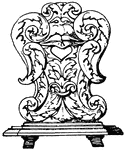
German 17th Century Chair
The German 17th century chair had openings for the hand that were carved into the wooden back of the…
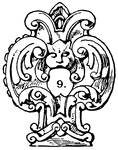
German 17th Century Chair
The German 17th century chair had openings for the hand that were carved into the wooden back of the…

Membranes of the Ovum
Diagrammatic section showing the relation in a mammal between the primitive alimentary canal and the…
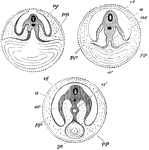
Development of the Yolk Sac
Diagram showing the three successive stages of development. Transverse vertical sections. The yolk sac,…
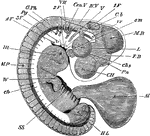
Embryo Chick at Fourth Day
Embryo chick at fourth day, viewed as a transparent object, lying on its left side. CH, cerebral hemispheres;…
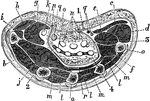
Horizontal Section of the Hand
Horizontal section of the hand through the middle of the thenar and hypothenar eminences. Labels: a,…
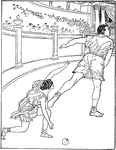
Atalanta's Race
Atalanta being distracted to pick up one of three golden apples dropped by Melanion, her suitor during…

Hyacinthine Gallinule
Also known as the Sultana-fowl. "When eating, sometimes is stands on one foot and uses the other as…
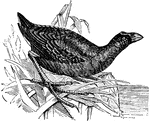
The Bald Coot
"Coots but rarely traverse firm ground, where they walk with difficulty; on the other hand, they swim…
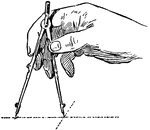
Adjusting the Compass
In changing the compass from a small to large radius, hold the legs together with one hand and spin…

Single Stroke Vertical Capitals
In this chart of single stroke letters, the capitals are arranged in "family order," first the straight…
Single Stroke Vertical Lower Case Letters
Words lettered in lower case or "small" letters are easier to read than when made in capital letters.…

Single Stroke Inclined Capitals
In this chart of single stroke letters, the capitals are arranged in "family order," first the straight…
Single Stroke Inclined Lower Case Letters
Words lettered in lower case or "small" letters are easier to read than when made in capital letters.…
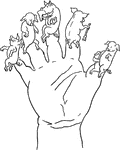
5 Little Pigs Finger Puppets
The hand contains a puppet for each of the five little pigs from the famous nursery rhyme.

Vertical Cane Mill
"The accompanying engraving is an illustration of a new style vertical mill in which an attempt is made…
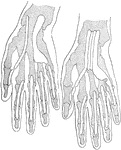
Tendon Sheaths of Wrist and Hand
Projections of two types of flexor tendon sheaths. Note that in the hand upon the right side there is…

Cross Section on a Line with the Palmar Arch of the Hand
Section on a line with the deep palmar arch of the right hand.

Cross Section Through Middle Metacarpal Bones of the Hand
Section through the middle of the right metacarpal bones.

Cross Section Through Distal End of the Metacarpal Bones of the Hand
Section through the distal end of the right metacarpal bones.
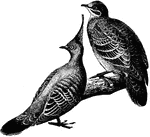
Doves
An illustration of two species of doves. On the left is a crested dove and on the right hand side is…

Cordycep
The Sphaeria sinensis a cordycep, a parasitic fungus. "The right hand figure represents the manner in…

Candle
A candle is a light source consisting of a solid block of wax and a wick. Pictured is a hand lighting…

Hand Pointing
The hand is the intricate, multi-fingered body part normally located at the end of each arm of a human.

Cuneiform Bone
The cuneiform may be distinguished by its pyramidal shape, and by its having an oval, isolated facet…

Pisiform Bone
The pisiform may be known by its small size and by its presenting a single articular facet. It is situated…
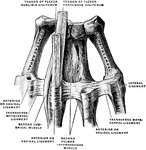
Bones of the Hand
Metacarpal bones and first phalanges of the second to the fifth of the right hand, with ligaments, from…
Metacarpal and Phalanges of Finger
Metacarpal bones and first phalanges of the third finger of the right hand, with ligaments, from the…

